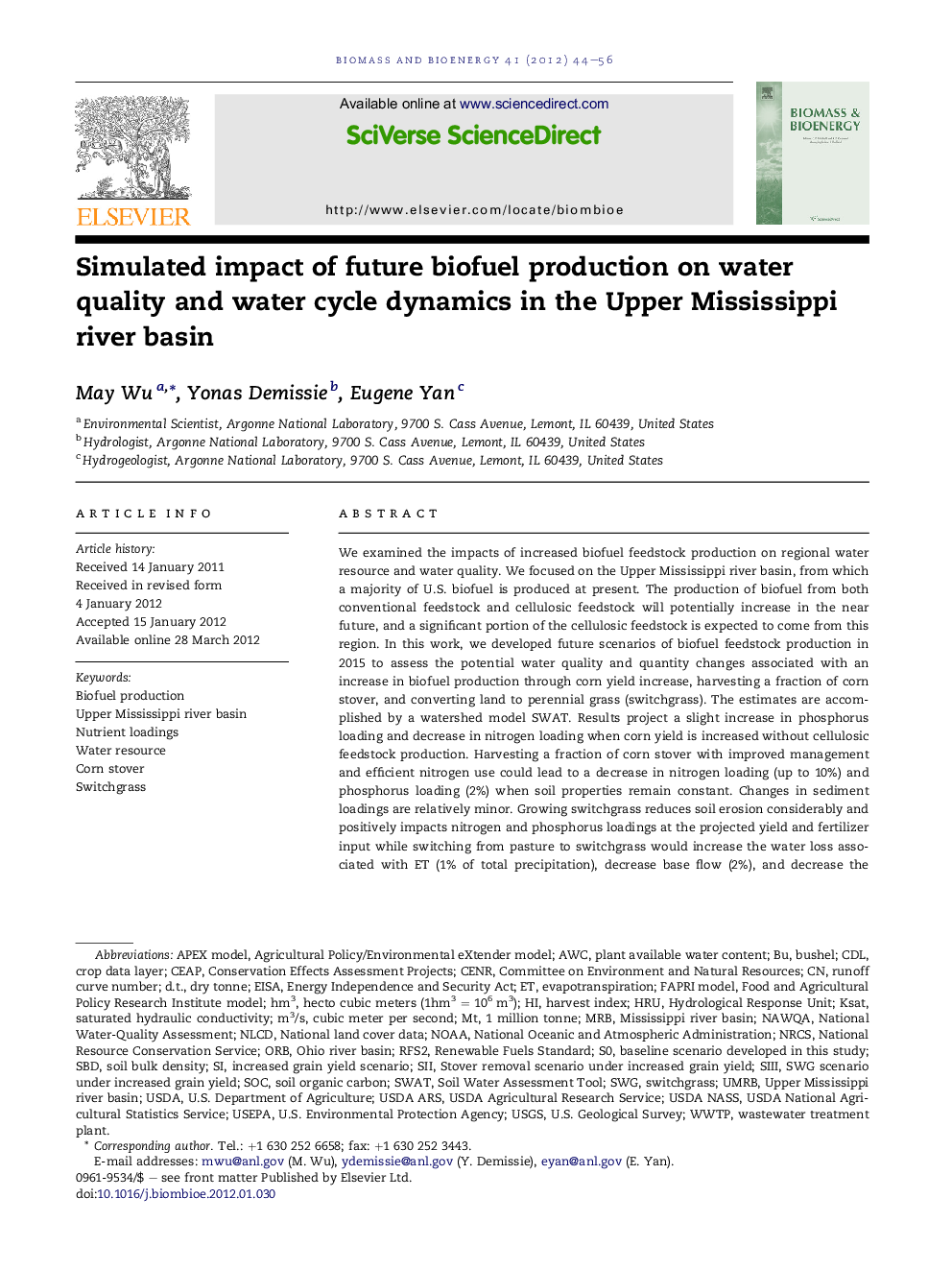| کد مقاله | کد نشریه | سال انتشار | مقاله انگلیسی | نسخه تمام متن |
|---|---|---|---|---|
| 677414 | 1459852 | 2012 | 13 صفحه PDF | دانلود رایگان |

We examined the impacts of increased biofuel feedstock production on regional water resource and water quality. We focused on the Upper Mississippi river basin, from which a majority of U.S. biofuel is produced at present. The production of biofuel from both conventional feedstock and cellulosic feedstock will potentially increase in the near future, and a significant portion of the cellulosic feedstock is expected to come from this region. In this work, we developed future scenarios of biofuel feedstock production in 2015 to assess the potential water quality and quantity changes associated with an increase in biofuel production through corn yield increase, harvesting a fraction of corn stover, and converting land to perennial grass (switchgrass). The estimates are accomplished by a watershed model SWAT. Results project a slight increase in phosphorus loading and decrease in nitrogen loading when corn yield is increased without cellulosic feedstock production. Harvesting a fraction of corn stover with improved management and efficient nitrogen use could lead to a decrease in nitrogen loading (up to 10%) and phosphorus loading (2%) when soil properties remain constant. Changes in sediment loadings are relatively minor. Growing switchgrass reduces soil erosion considerably and positively impacts nitrogen and phosphorus loadings at the projected yield and fertilizer input while switching from pasture to switchgrass would increase the water loss associated with ET (1% of total precipitation), decrease base flow (2%), and decrease the surface runoff flow to the basin. Major factors – including land use changes, feedstock types, fertilizer inputs, crop yield, and soil properties – were analyzed for their direct and composite impacts.
► Increasing corn yield lowers nutrient and sediment loadings per unit of biofuel produced.
► Growing switchgrass in pasture land reduces nutrient and soil loss to the river basin.
► Producing biofuel from switchgrass decreases soil moisture and increases evapotranspiration.
Journal: Biomass and Bioenergy - Volume 41, June 2012, Pages 44–56